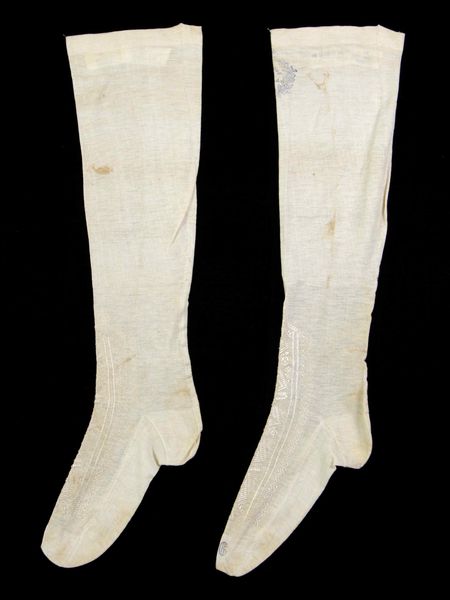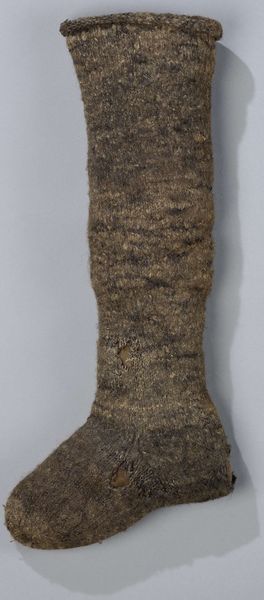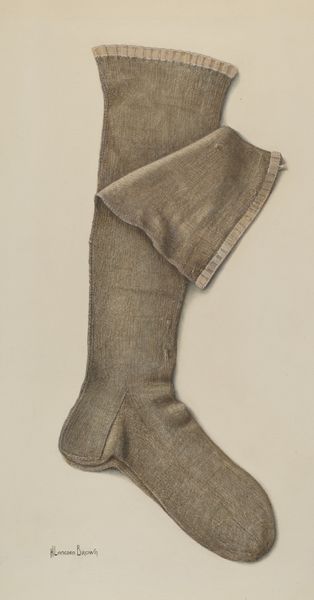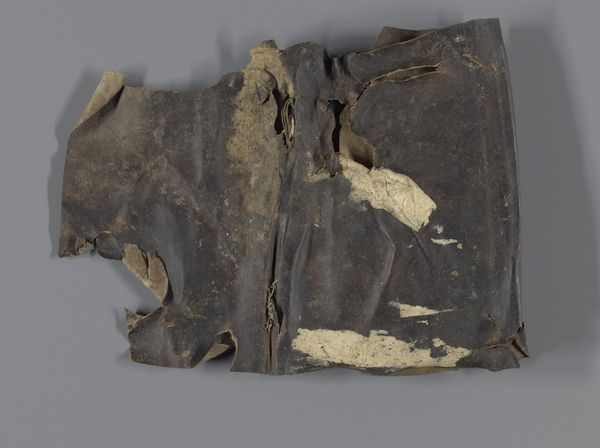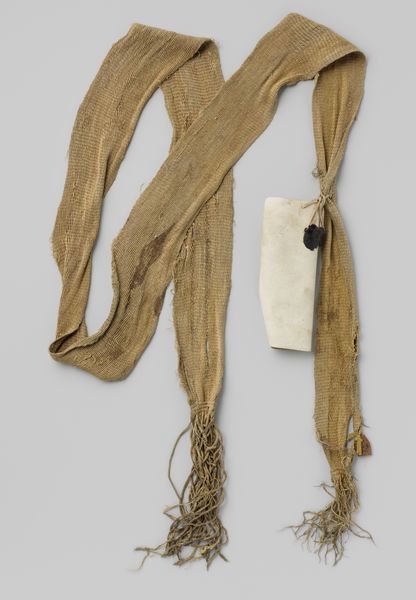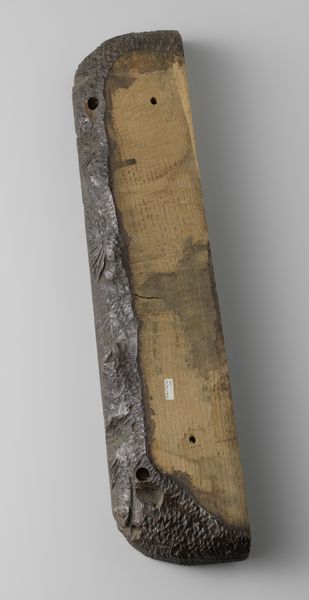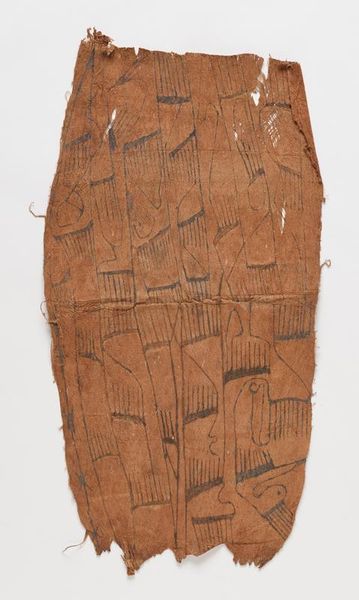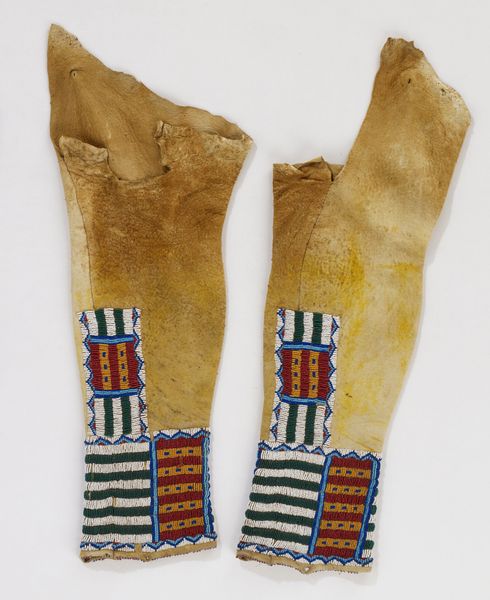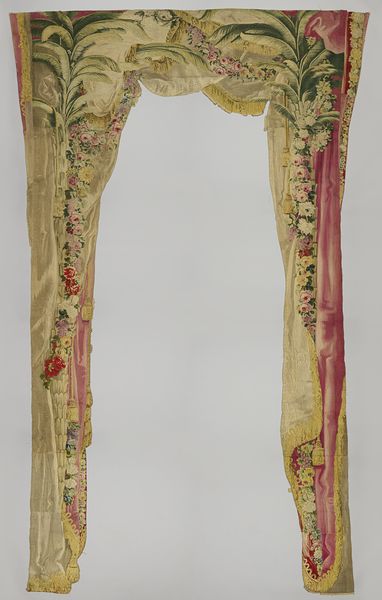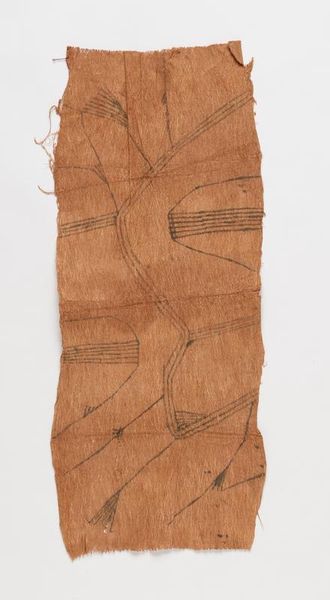
Kniekous, lichtbruin, de boord is gebreid in averechte steek en er loopt een siernaad vanaf de boord tot aan de hiel c. 1650 - 1700
0:00
0:00
fibre-art, textile
#
fibre-art
#
textile
#
coloured pencil
#
ancient-mediterranean
#
decorative-art
Dimensions: width 88.5 cm, height 7 cm, depth 60 cm, height 63 cm, length 30 cm
Copyright: Rijks Museum: Open Domain
Editor: Here we have a pair of light brown knitted socks, dating back to between 1650 and 1700, made with fibre and textile. Their worn state is striking. What stands out to you? Curator: Immediately, the materiality draws my attention. Observe the varying textures: the tighter knit of the cuff contrasts sharply with the extensively damaged main body. Note how the light catches the remaining threads. This interplay creates a tangible tension between the original form and its current, fragmented state. Editor: I see what you mean. It is all about texture. But I also see the way the socks take up space; they have almost an anthropomorphic quality despite being mere objects. Curator: Precisely. The lines, though broken, still imply a human form. Consider the "negative space"—the holes themselves become compositional elements. They interrupt the expected pattern and demand consideration. Is the symmetry present indicative of the process in their making by hand? What narrative might these perforations and careful seams suggest about its maker and the work these garments might have seen? Editor: It's fascinating how much information can be gleaned from the visual form alone, beyond its historical or practical context. This helps me reconsider art as a means for expressing information. Curator: Yes. A pure visual analysis permits insight when we attend closely to form and technique, it prompts further reflection and unlocks fresh awareness.
Comments
No comments
Be the first to comment and join the conversation on the ultimate creative platform.

